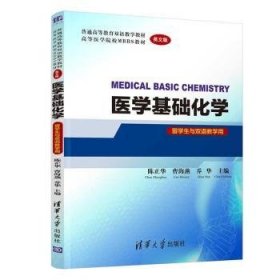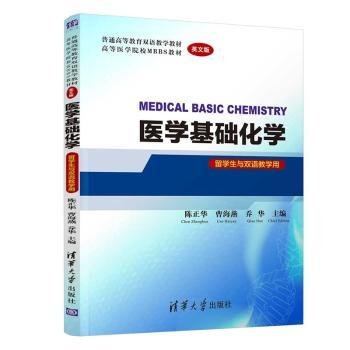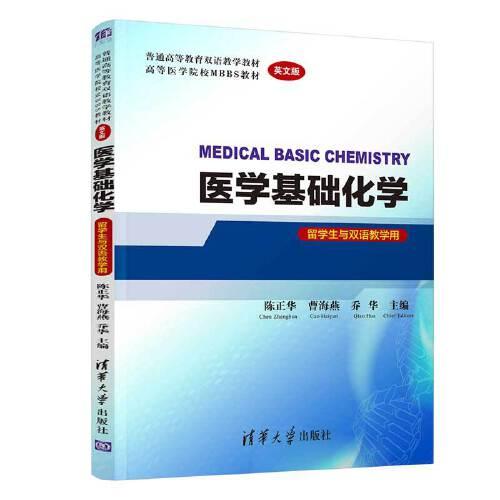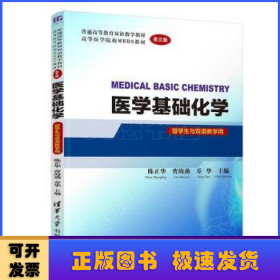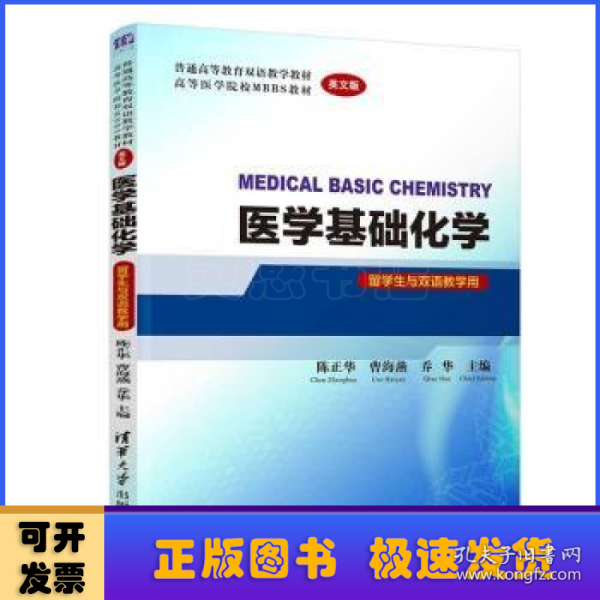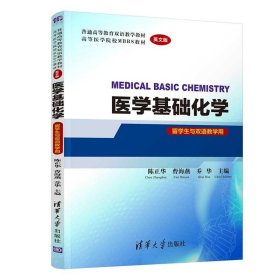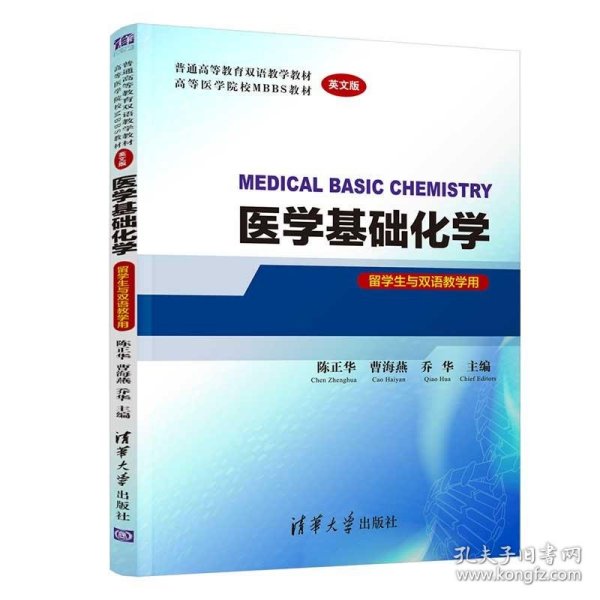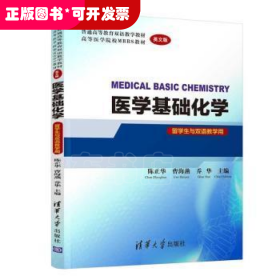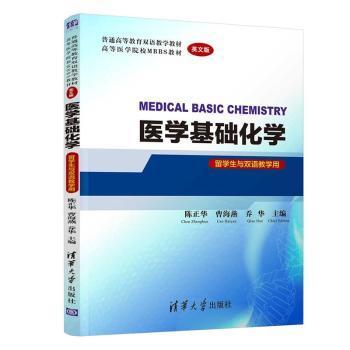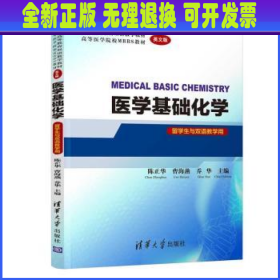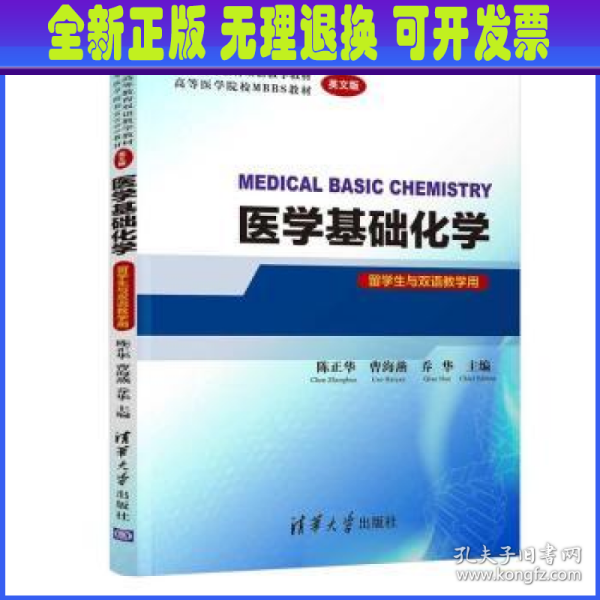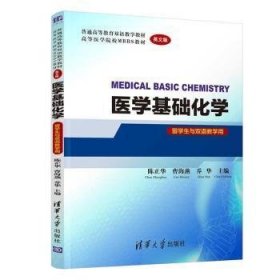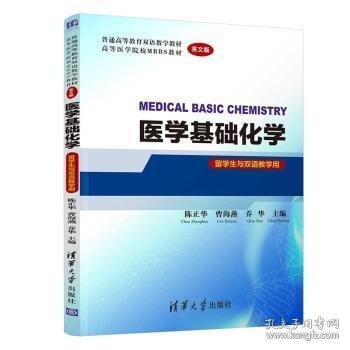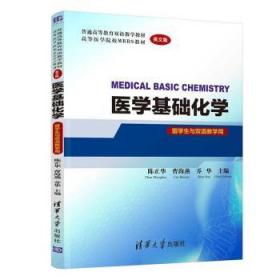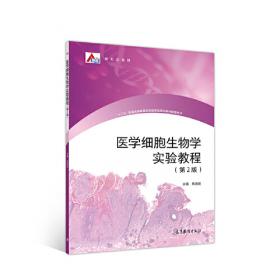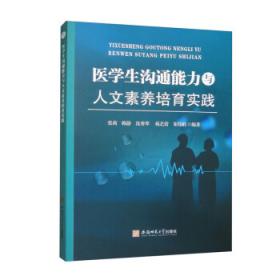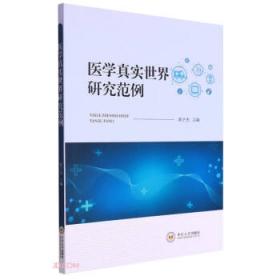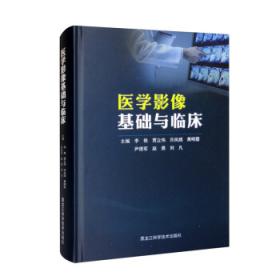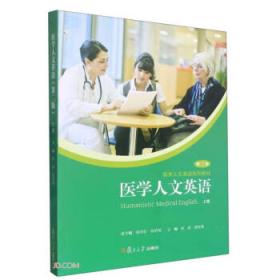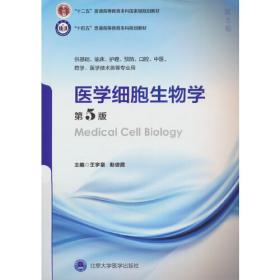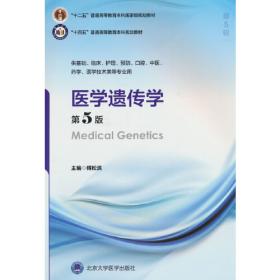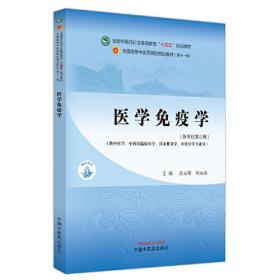医学基础化学 MEDICAL BASIC CHEMISTRY(英文版)(留学生与双语教学用)
出版时间:
2021-08
版次:
1
ISBN:
9787302577850
定价:
98.00
装帧:
其他
开本:
16开
纸张:
胶版纸
1人买过
-
医用基础化学是一门公共基础课,主要介绍与医学有关的化学知识。学习该课程有利于后续课程的学习,能为学生将来的医学研究和临床工作打下坚实的基础。根据医学生的专业特点、需求,结合留学生的语言特点和自身学识基础,由浅入深系统的介绍化学基础知识。讲述化学在医学研究和临床中的应用,弥补其它教材的不足。采用PBL(以问题为中心)的方法编写教材。 主编陈正华:毕业于南开大学化学系,硕士学位,副教授,是天津医科大学批授予留学生教学资格的教师。1995年至今在天津医科大学从事医用化学本科生、留学生教学。从事留学生英文授课17年。主持国家“十五”重点立项课题“21世纪中国高等学校农林/医药类专业数理化基础课程的创新与实践”子项目 ,医学化学(基础化学、有机化学融为一体)新课程体系的创新与研究”,主持天津医科大学教学研究基金“医用基础化学双语教学课程建设”,参与卫生部课题---视听教材医用化学综合性实验。主编供留学生使用的教材《GENERAL CHEMISTRY》,《Guid to Chemical Experiments》,《Experimental Organic Chemistry Fo rMedical Students》,校内出版。主持编写教育部全英文临床医学专业《基础化学英语教学大纲》。参编教育科学“十五”国家规划课题研究成果《医用化学实验》 高等教育出版社,《基础化学习题解析》 高等教育出版社, 《医用基础化学实验》 科学普及出版社。 Chapter 1 Introduction // 1
1.1 Chemistry is a Central Science // 1
1.2 The Scope of the Book // 1
1.3 Advice for Studying Chemistry // 2
Chapter 2 Colligative Properties of Dilute Solutions // 3
2.1 Concentration Expressions //3
2.2 Lowering of Vapor Pressure and RAOULT’S Law // 4
2.3 Boiling Point Elevation // 6
2.4 Freezing Point Depression //7
2.5 Osmotic Pressure // 8 Exercises // 12
Chapter 3 Acid-Base Dissociation Equilibria // 13
3.1 Br?nsted-Lowry Theory of Acids and Bases //13
3.2 The Autoionization of Water and the pH Scale // 15
3.3 Ionization Constants for Weak Acids and Bases // 16
3.4 Calculating the pH of Solutions of Weak Acids and Bases // 20 Problems // 25
Chapter 4 Buffer Solutions // 26
4.1 Composition and Action of Buffer solutions // 26
4.2 The pH Value of Buffer Solutions // 27
4.3 Buffer Capacity and Buffer Range //29
4.4 Preparation of Buffer Solutions // 30
4.5 Buffer Solutions in Human Blood // 32 Problems // 33
Chapter 5 Acid-Base Titration // 35
5.1 Introduction // 35
5.2 Acid-Base Indicators // 35
5.3 The Titration Curve and the Selection of Indicators // 37
5.4 Standard Solutions of Acids and Bases // 41
5.5 Application of Acid-Base Titration // 43 Problems // 44
Chapter 6 Thermodynamics // 45
6.1 The First Law of Thermodynamics // 45
6.2 Thermochemistry // 48
6.3 The Second Law of Thermodynamics // 52
6.4 Molar Gibbs Free Energy of Reaction // 54 Problems // 57
Chapter 7 Chemical Kinetics // 59
7.1 The Rate of a Chemical Reaction // 59
7.2 The Theory of Chemical Kinetics // 60
7.3 Effect of Concentration on Rates of Reactions // 61
7.4 Effect of Temperature on Reaction Rates // 65 Problems // 66
Chapter 8 Chemical Equilibrium // 67
8.1 The Concept of Equilibrium // 67
8.2 Equilibrium Constants // 67
8.3 Calculating Values of Equilibrium Constants // 68
8.4 Application of Equilibrium Constants // 68 Problems // 69
Chapter 9 Electrochemistry // 70
9.1 Oxidation-Reduction Reactions // 70
9.2 Voltaic Cells // 71
9.3 Electrode Potentials and Cell Potentials // 73
9.4 The Uses of Electrode Potentials // 77 Problems // 79
Chapter 10 Atomic Structure and Periodicity // 81
10.1 The Atomic Spectrum of Hydrogen and the Bohr Theory //81
10.2 The Properties of Microscopic Particles // 82
10.3 The Structure of Hydrogen Atom // 83
10.4 Many-Electron Atoms // 88
10.5 The Periodic Table // 91 Problems // 93
Chapter 11 Covalent Bond and Intermolecular Forces // 95
11.1 Covalent Bond and the Valence Bond Theory // 95
11.2 Hybrid Orbital Theory // 98
11.3 Molecular Orbital Theory // 101
11.4 Delocalized π Bond // 104
11.5 Intermolecular Forces and Hydrogen Bonding // 105 Problems // 107
Chapter 12 Coordination Compounds // 109
12.1 Introduction to Coord ination Compounds // 109
12.2 Bonding Theory of Coordination Compounds // 112
12.3 Coordination Equilibria // 114
12.4 Chelate // 117
Problems // 118
Chapter 13 Colloids // 119
13.1 Colloidal Disperse System // 119
13.2 The Properties of Sol // 119
Problems // 124
Keys to Exercises // 125
Appendix A Standard Thermodynamic Data for Selected Substances at 298.15 K // 131
Appendix B Standard Molar Enthalpies of Combustion for Selected Substances at 298.15 K // 133 Appendix C Cumulative Stability Constants of Coordination Compounds
(298.15 K) // 134
References // 140
-
内容简介:
医用基础化学是一门公共基础课,主要介绍与医学有关的化学知识。学习该课程有利于后续课程的学习,能为学生将来的医学研究和临床工作打下坚实的基础。根据医学生的专业特点、需求,结合留学生的语言特点和自身学识基础,由浅入深系统的介绍化学基础知识。讲述化学在医学研究和临床中的应用,弥补其它教材的不足。采用PBL(以问题为中心)的方法编写教材。
-
作者简介:
主编陈正华:毕业于南开大学化学系,硕士学位,副教授,是天津医科大学批授予留学生教学资格的教师。1995年至今在天津医科大学从事医用化学本科生、留学生教学。从事留学生英文授课17年。主持国家“十五”重点立项课题“21世纪中国高等学校农林/医药类专业数理化基础课程的创新与实践”子项目 ,医学化学(基础化学、有机化学融为一体)新课程体系的创新与研究”,主持天津医科大学教学研究基金“医用基础化学双语教学课程建设”,参与卫生部课题---视听教材医用化学综合性实验。主编供留学生使用的教材《GENERAL CHEMISTRY》,《Guid to Chemical Experiments》,《Experimental Organic Chemistry Fo rMedical Students》,校内出版。主持编写教育部全英文临床医学专业《基础化学英语教学大纲》。参编教育科学“十五”国家规划课题研究成果《医用化学实验》 高等教育出版社,《基础化学习题解析》 高等教育出版社, 《医用基础化学实验》 科学普及出版社。
-
目录:
Chapter 1 Introduction // 1
1.1 Chemistry is a Central Science // 1
1.2 The Scope of the Book // 1
1.3 Advice for Studying Chemistry // 2
Chapter 2 Colligative Properties of Dilute Solutions // 3
2.1 Concentration Expressions //3
2.2 Lowering of Vapor Pressure and RAOULT’S Law // 4
2.3 Boiling Point Elevation // 6
2.4 Freezing Point Depression //7
2.5 Osmotic Pressure // 8 Exercises // 12
Chapter 3 Acid-Base Dissociation Equilibria // 13
3.1 Br?nsted-Lowry Theory of Acids and Bases //13
3.2 The Autoionization of Water and the pH Scale // 15
3.3 Ionization Constants for Weak Acids and Bases // 16
3.4 Calculating the pH of Solutions of Weak Acids and Bases // 20 Problems // 25
Chapter 4 Buffer Solutions // 26
4.1 Composition and Action of Buffer solutions // 26
4.2 The pH Value of Buffer Solutions // 27
4.3 Buffer Capacity and Buffer Range //29
4.4 Preparation of Buffer Solutions // 30
4.5 Buffer Solutions in Human Blood // 32 Problems // 33
Chapter 5 Acid-Base Titration // 35
5.1 Introduction // 35
5.2 Acid-Base Indicators // 35
5.3 The Titration Curve and the Selection of Indicators // 37
5.4 Standard Solutions of Acids and Bases // 41
5.5 Application of Acid-Base Titration // 43 Problems // 44
Chapter 6 Thermodynamics // 45
6.1 The First Law of Thermodynamics // 45
6.2 Thermochemistry // 48
6.3 The Second Law of Thermodynamics // 52
6.4 Molar Gibbs Free Energy of Reaction // 54 Problems // 57
Chapter 7 Chemical Kinetics // 59
7.1 The Rate of a Chemical Reaction // 59
7.2 The Theory of Chemical Kinetics // 60
7.3 Effect of Concentration on Rates of Reactions // 61
7.4 Effect of Temperature on Reaction Rates // 65 Problems // 66
Chapter 8 Chemical Equilibrium // 67
8.1 The Concept of Equilibrium // 67
8.2 Equilibrium Constants // 67
8.3 Calculating Values of Equilibrium Constants // 68
8.4 Application of Equilibrium Constants // 68 Problems // 69
Chapter 9 Electrochemistry // 70
9.1 Oxidation-Reduction Reactions // 70
9.2 Voltaic Cells // 71
9.3 Electrode Potentials and Cell Potentials // 73
9.4 The Uses of Electrode Potentials // 77 Problems // 79
Chapter 10 Atomic Structure and Periodicity // 81
10.1 The Atomic Spectrum of Hydrogen and the Bohr Theory //81
10.2 The Properties of Microscopic Particles // 82
10.3 The Structure of Hydrogen Atom // 83
10.4 Many-Electron Atoms // 88
10.5 The Periodic Table // 91 Problems // 93
Chapter 11 Covalent Bond and Intermolecular Forces // 95
11.1 Covalent Bond and the Valence Bond Theory // 95
11.2 Hybrid Orbital Theory // 98
11.3 Molecular Orbital Theory // 101
11.4 Delocalized π Bond // 104
11.5 Intermolecular Forces and Hydrogen Bonding // 105 Problems // 107
Chapter 12 Coordination Compounds // 109
12.1 Introduction to Coord ination Compounds // 109
12.2 Bonding Theory of Coordination Compounds // 112
12.3 Coordination Equilibria // 114
12.4 Chelate // 117
Problems // 118
Chapter 13 Colloids // 119
13.1 Colloidal Disperse System // 119
13.2 The Properties of Sol // 119
Problems // 124
Keys to Exercises // 125
Appendix A Standard Thermodynamic Data for Selected Substances at 298.15 K // 131
Appendix B Standard Molar Enthalpies of Combustion for Selected Substances at 298.15 K // 133 Appendix C Cumulative Stability Constants of Coordination Compounds
(298.15 K) // 134
References // 140
查看详情
-
全新
北京市丰台区
平均发货8小时
成功完成率90.95%
-
全新
河北省保定市
平均发货31小时
成功完成率77.22%
-
全新
山东省泰安市
平均发货25小时
成功完成率92.51%
-
全新
上海市黄浦区
平均发货11小时
成功完成率94.34%
-
全新
北京市通州区
平均发货10小时
成功完成率86.85%
-
全新
北京市通州区
平均发货10小时
成功完成率94.19%
-
全新
北京市房山区
平均发货23小时
成功完成率77.08%
-
医学基础化学:英文版
重要提醒:::重要提醒::所有图书保证正版,按书名发货图片仅供参考, 有疑问请咨询客服,看清书名按书名发货
全新
北京市通州区
平均发货9小时
成功完成率89.49%
-
全新
江苏省宿迁市
平均发货23小时
成功完成率88.02%
-
全新
山东省泰安市
平均发货8小时
成功完成率93.08%
-
全新
北京市海淀区
平均发货20小时
成功完成率86.36%
-
全新
北京市海淀区
平均发货11小时
成功完成率93.4%
-
全新
山东省泰安市
平均发货9小时
成功完成率88.89%
-
全新
河北省廊坊市
平均发货15小时
成功完成率70.04%
-
全新
山东省泰安市
平均发货12小时
成功完成率91.5%
-
全新
河北省保定市
平均发货10小时
成功完成率93.63%
-
全新
广东省广州市
平均发货10小时
成功完成率87.58%
-
全新
河北省保定市
平均发货27小时
成功完成率77.79%
-
全新
北京市海淀区
平均发货10小时
成功完成率90.82%
-
全新
河北省保定市
平均发货15小时
成功完成率66.67%
-
全新
-
全新
北京市房山区
平均发货8小时
成功完成率85.29%
-
全新
内蒙古呼和浩特市
平均发货18小时
成功完成率42.62%
-
全新
-
全新
四川省成都市
平均发货55小时
成功完成率82.84%
-
全新
四川省成都市
平均发货15小时
成功完成率80.19%
-
全新
广东省广州市
平均发货19小时
成功完成率86.79%
-
全新
山东省泰安市
平均发货17小时
成功完成率93.63%
-
九五品
河北省保定市
平均发货19小时
成功完成率79.01%
-
九五品
北京市朝阳区
平均发货29小时
成功完成率85.73%
-
全新
北京市朝阳区
平均发货12小时
成功完成率85.47%
-
全新
河北省保定市
平均发货29小时
成功完成率69.47%

 占位居中
占位居中


